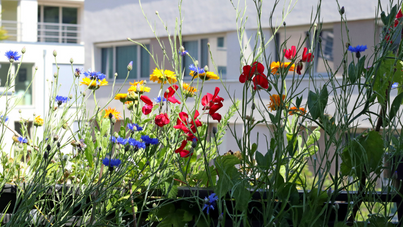The countdown to mandatory BNG delivery has begun, what do developers need to be doing to prepare for this milestone?
Biodiversity Net Gain (or ‘BNG’) found its way into legislation nearly a year ago. Its ‘transitional’ arrangements will close in November 2023, meaning thereafter BNG delivery will become a mandatory requirement for the vast majority of housebuilders and developers.
For an overview of the basics of BNG please consult our earlier publication:
Biodiversity Net Gain: the basics
What is the transition period and when does it end?
The Environment Act 2021 allowed for a ‘transition period’ to afford Local Planning Authorities an opportunity to gear up towards the mandatory requirement for BNG to be demonstrated and delivered through the planning system. In short, during the transition period LPAs are not required to impose BNG on developments unless they want to. Some LPAs have already rolled out BNG delivery on certain developments but the remainder will have to do so by law when the transition period comes to an end in November 2023 (we don’t currently know the precise date on which the transition period will come to an end).
All developers and housebuilders will need to ensure they have a firm grasp of the BNG requirements and delivery methods well ahead of the November 2023 deadline. Those who are not properly prepared will risk facing even greater delays in the planning system, unexpected costs affecting viability and potentially ongoing liabilities reaching far beyond sales and ‘site exit’ for which they have not accounted.
What steps should developers be taking before November 2023?
Over the next 12 months developers should be doing what they can to familiarise themselves with the BNG regime in the context of their business operations. Some practical steps to take would include:-
1. Understanding the Biodiversity Matrix prepared by Natural England. This provides the formula for calculating existing and required levels of biodiversity and will be the basis on which BNG requirements for individual developments are assessed.
2. Reviewing the Biodiversity Matrix against existing ‘pipeline’ sites and/or prospective sites where it is anticipated that a planning application will be submitted post-November 2023. This will offer some insight into what a 10% ‘net gain’ will look like on proposed development projects. Developers should also consider whether these sites fall within the administrative boundaries of an LPA that is already imposing BNG (because many will be) and if so what the consequences will be for their development proposals and viability. Finally, Developers should re-assess their contractual obligations to maximise value in light of the cost implications of on-site vs. off-site BNG options (with the latter, particularly BNG units, likely to be more expensive).
3. Familiarise themselves with existing LPA literature and guidance on BNG delivery, including examples of BNG planning conditions and S.106 obligations. Examples of these include:-
4. Planning ahead by considering new design strategies aimed at maximising on-site delivery opportunities through the creation of habitats which can be incorporated into developments. Bat or bird boxes and hedgehog highways will not suffice because the Biodiversity Metric takes a habitat-based approach. So developers will need to think creatively about how they can, for example, convert public open space into a BNG vehicle – possibly by establishing meadows, using indigenous hedges rather than boundary fencing and/or creating wetlands within the proximity of attenuation facilities. Another key feature of the BNG regime is that the gain and associated management must be in place for 30 years. Developers need to be thinking about what changes they will need to make to their estate management services if their management companies will now be required to maintain specially created ecological habitats long after sales have completed.
5. Reviewing and understanding the current range of ‘off-site’ delivery measures available. These could include delivering BNG on neighbouring land, purchasing non-statutory BNG units created through networks of habitat banks and purchasing statutory biodiversity credits. We have also previously considered the use of conservation covenants to achieve BNG in: Conservation covenants: The basics and Conservation covenants: What is a ‘Responsible Body’?



